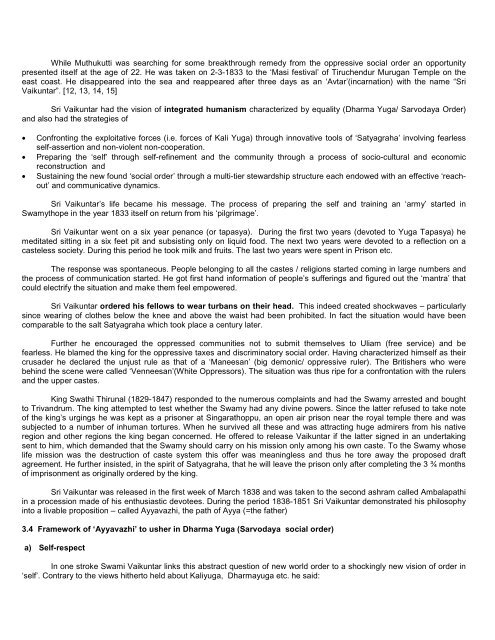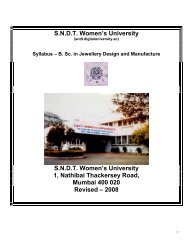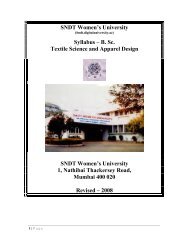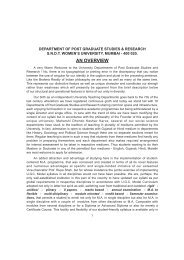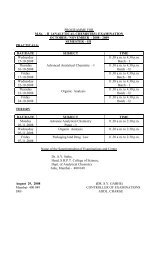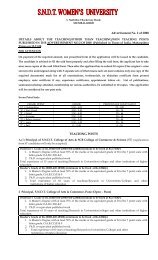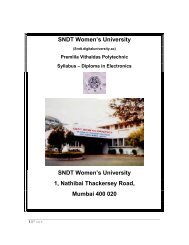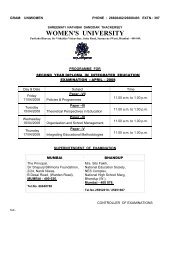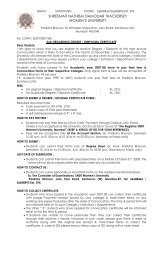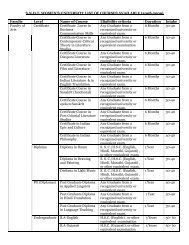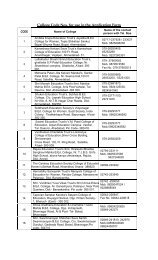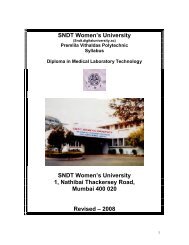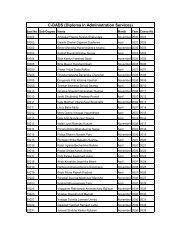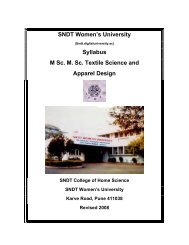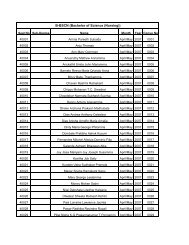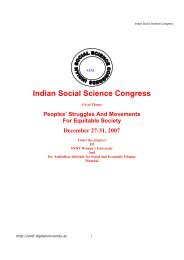XXXI Abstracts Part 1 page 1-189
XXXI Abstracts Part 1 page 1-189
XXXI Abstracts Part 1 page 1-189
Create successful ePaper yourself
Turn your PDF publications into a flip-book with our unique Google optimized e-Paper software.
While Muthukutti was searching for some breakthrough remedy from the oppressive social order an opportunity<br />
presented itself at the age of 22. He was taken on 2-3-1833 to the ‘Masi festival’ of Tiruchendur Murugan Temple on the<br />
east coast. He disappeared into the sea and reappeared after three days as an ‘Avtar’(incarnation) with the name “Sri<br />
Vaikuntar”. [12, 13, 14, 15]<br />
Sri Vaikuntar had the vision of integrated humanism characterized by equality (Dharma Yuga/ Sarvodaya Order)<br />
and also had the strategies of<br />
• Confronting the exploitative forces (i.e. forces of Kali Yuga) through innovative tools of ‘Satyagraha’ involving fearless<br />
self-assertion and non-violent non-cooperation.<br />
• Preparing the ‘self’ through self-refinement and the community through a process of socio-cultural and economic<br />
reconstruction and<br />
• Sustaining the new found ‘social order’ through a multi-tier stewardship structure each endowed with an effective ‘reachout’<br />
and communicative dynamics.<br />
Sri Vaikuntar’s life became his message. The process of preparing the self and training an ‘army’ started in<br />
Swamythope in the year 1833 itself on return from his ‘pilgrimage’.<br />
Sri Vaikuntar went on a six year penance (or tapasya). During the first two years (devoted to Yuga Tapasya) he<br />
meditated sitting in a six feet pit and subsisting only on liquid food. The next two years were devoted to a reflection on a<br />
casteless society. During this period he took milk and fruits. The last two years were spent in Prison etc.<br />
The response was spontaneous. People belonging to all the castes / religions started coming in large numbers and<br />
the process of communication started. He got first hand information of people’s sufferings and figured out the ‘mantra’ that<br />
could electrify the situation and make them feel empowered.<br />
Sri Vaikuntar ordered his fellows to wear turbans on their head. This indeed created shockwaves – particularly<br />
since wearing of clothes below the knee and above the waist had been prohibited. In fact the situation would have been<br />
comparable to the salt Satyagraha which took place a century later.<br />
Further he encouraged the oppressed communities not to submit themselves to Uliam (free service) and be<br />
fearless. He blamed the king for the oppressive taxes and discriminatory social order. Having characterized himself as their<br />
crusader he declared the unjust rule as that of a ‘Maneesan’ (big demonic/ oppressive ruler). The Britishers who were<br />
behind the scene were called ‘Venneesan’(White Oppressors). The situation was thus ripe for a confrontation with the rulers<br />
and the upper castes.<br />
King Swathi Thirunal (1829-1847) responded to the numerous complaints and had the Swamy arrested and bought<br />
to Trivandrum. The king attempted to test whether the Swamy had any divine powers. Since the latter refused to take note<br />
of the king’s urgings he was kept as a prisoner at Singarathoppu, an open air prison near the royal temple there and was<br />
subjected to a number of inhuman tortures. When he survived all these and was attracting huge admirers from his native<br />
region and other regions the king began concerned. He offered to release Vaikuntar if the latter signed in an undertaking<br />
sent to him, which demanded that the Swamy should carry on his mission only among his own caste. To the Swamy whose<br />
life mission was the destruction of caste system this offer was meaningless and thus he tore away the proposed draft<br />
agreement. He further insisted, in the spirit of Satyagraha, that he will leave the prison only after completing the 3 ¾ months<br />
of imprisonment as originally ordered by the king.<br />
Sri Vaikuntar was released in the first week of March 1838 and was taken to the second ashram called Ambalapathi<br />
in a procession made of his enthusiastic devotees. During the period 1838-1851 Sri Vaikuntar demonstrated his philosophy<br />
into a livable proposition – called Ayyavazhi, the path of Ayya (=the father)<br />
3.4 Framework of ‘Ayyavazhi’ to usher in Dharma Yuga (Sarvodaya social order)<br />
a) Self-respect<br />
In one stroke Swami Vaikuntar links this abstract question of new world order to a shockingly new vision of order in<br />
‘self’. Contrary to the views hitherto held about Kaliyuga, Dharmayuga etc. he said:


